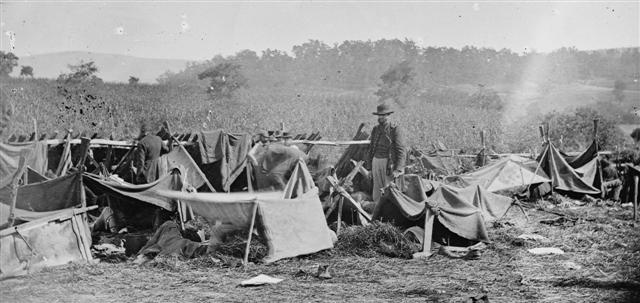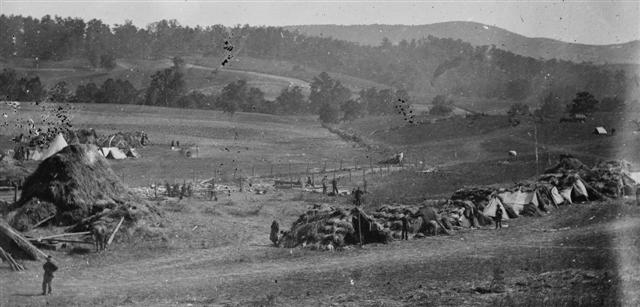

Erect, to the right of the center, stands Dr. A. Hurd, of the Fourteenth Indiana Volunteers, caring for Confederate wounded near the battlefield of Antietam. Around him the twisted forms of sufferers lie under temporary coverings, made of blankets or flaps from shelter-tents suspended upon guns for tent-poles. Swords are not yet "beaten into plowshares," but bayonets are thrust into the ground for the merciful purpose of protecting the feverish patients from the burning sun. Use has been made of the hay from Smith's farm nearby to form soft beds for the wounded limbs. Further shelter has been improvised by laying fence-rails against supporting poles. Below appear the straw huts for wounded on Smith's farm, erected a day or two later. The surgeon on the field of battle knew neither friend nor foe in his treatment of the wounded. On June 6, 1862, a week after the battles of Seven Pines or Fair Oaks, a general order was issued from Washington that surgeons should be considered non-combatants and not sent to prison. It was a result of "Stonewall" Jackson's previous action, and was accepted by Lee at Richmond on the 17th.

Keedysville, Maryland (vicinity). Straw huts erected on Smith's farm used as a hospital after the battle of Antietam
visits since 03/10/2004.
Page updated
11/28/2004